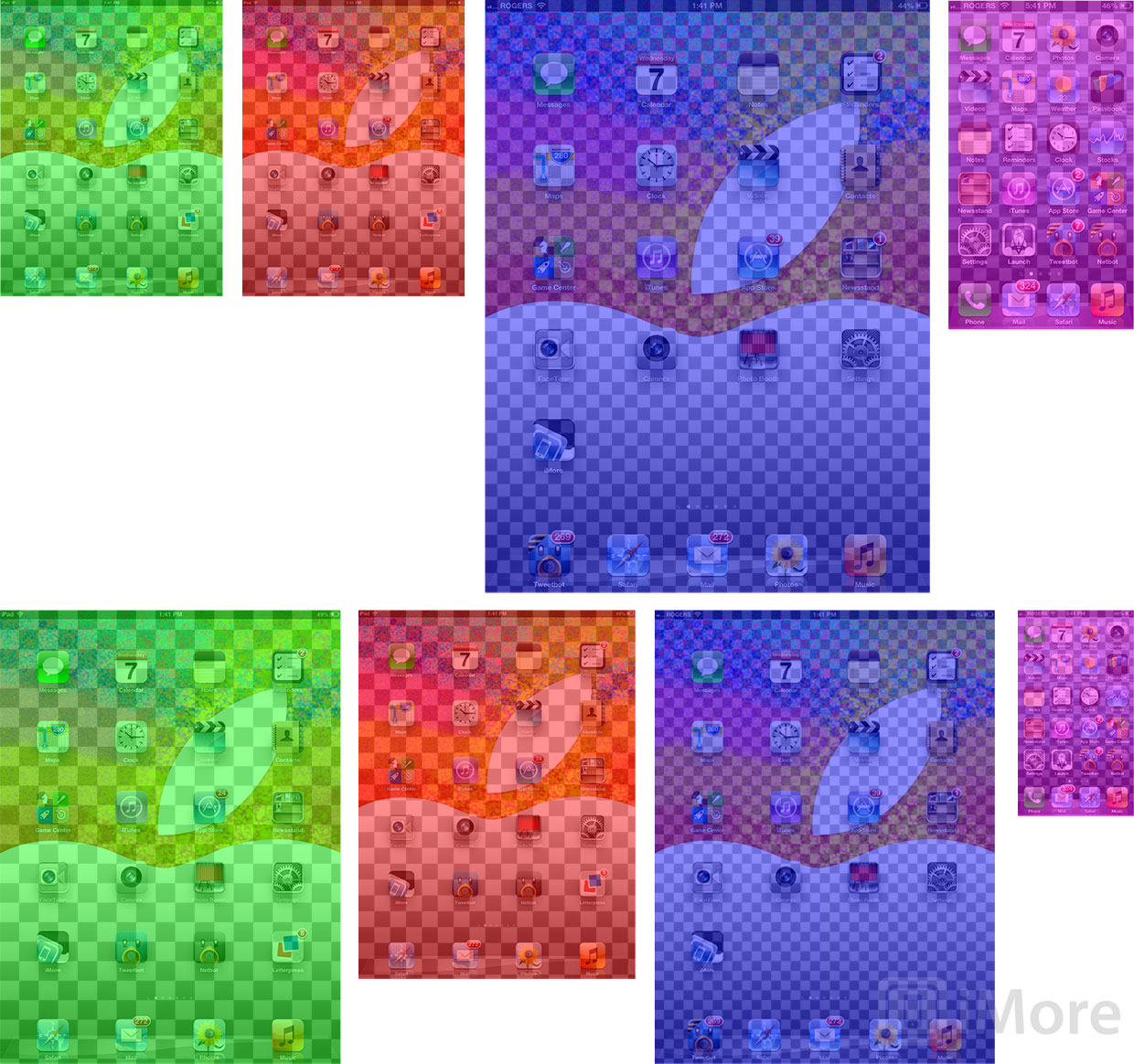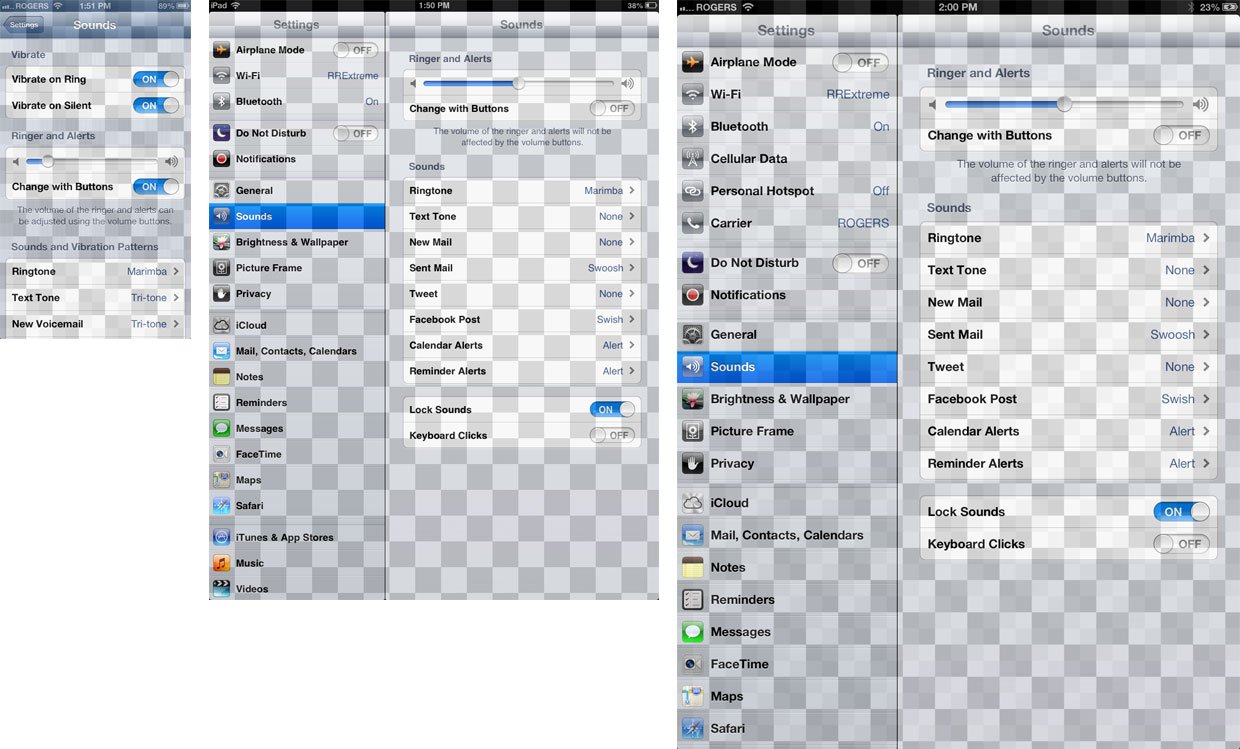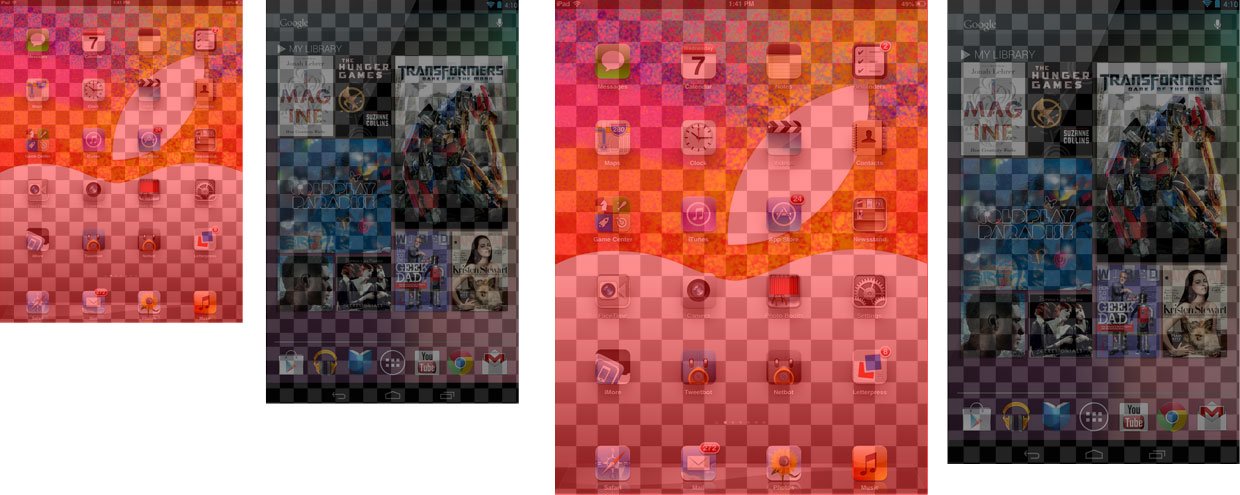Why Apple couldn't make the iPad mini with a Retina display

The iPad mini doesn't have a Retina display, and that's left it and Apple open to a lot of criticism. It's easy to say the iPad mini should have a Retina display, but unfortunately for Apple and for us, it's not so easy to engineer. It comes at a cost. I've mentioned that before in passing, but given the press it's still getting, over a week over launch, it bears repeating.
If you're not familiar with the term Retina display, it's the marketing jargon Apple uses to describe HiDPI (high dots-per-inch), or screens that have pixels so small they "disappear", providing a more enjoyable, more glossy magazine-style experience. Instead of the dots that make up the face or text or character you're looking at, you just see the face or text or character. Apple achieves Retina display while maintaining software compatibility by pixel doubling both horizontal and vertical resolution. 1 pixel at standard density becomes divided into 4 pixels at Retina density.
The iPhone and iPod touch went from 480x320 at 163ppi to 960x640 at 326 dpi in the summer and fall of 2010. The full sized iPad went from 1024x768 at 132 ppi to 2048x1536 in March of 2012. The last time Apple released a non-Retina iOS device was the iPad 2 in March of 2011 (and that's the device upon which the iPad mini is based). As John Gruber of Daring Fireball pointed out, there's a direct parallel between those devices and Retina displays as well:
I don’t see how the non-retina iPad Mini shipping seven months after the retina iPad 3 is any different than the non-retina iPad 2 shipping nine months after the retina iPhone 4 was unveiled. Retina spoils you. If Apple could go retina across the board in one fell swoop — all iPhones, all iPads, all Macs — they would. But they can’t.
It comes down to physics and economics -- more precisely, the realities technology and pricing. The goal of the iPad mini was thinness and lightness; to give you everything the full-sized iPad has but in a more portable form. When the full-sized iPad went Retina, it actually got slightly thicker and heavier. Apple couldn't have an iPad mini that was that thin, light, and cheap, with 10 hours of battery life, and a Retina display. They had to choose 2 of the 3, and they chose form factor and battery.
As Kontra points out:
[Apple] can sell a more/less expensive, thinner/thicker, heavier/lighter, hi/low res, but not one with substantially shorter battery
You might be tempted to call foul and point out that both the iPhone 5 and the iPod touch 5 have Retina displays and both have become increasingly, ludicrously thin over time. But here's the thing: iPhones and iPods have far, far fewer pixels than iPads. Retina iPhones and iPods have roughly the same pixel count as NON-Retina iPads. Right now the non-Retina iPad mini has a pixel count of 786,432 (1024x768) compared to the iPhone 5's pixel count of 727,040 (1136x640). A Retina iPad mini would shoot up to 3,145,728 (2048x1536). Lighting and powering that many pixels requires a lot of LED and a lot of battery. Driving that many pixels also requires a quad-core Apple A5X processor at a minimum, perhaps even an Apple A6X.
Gruber notes:
Master your iPhone in minutes
iMore offers spot-on advice and guidance from our team of experts, with decades of Apple device experience to lean on. Learn more with iMore!
Don’t forget scrolling/graphics performance. Expensive, power-consuming, and hot for retina.
The iPad mini is almost as thin, inexpensive, and long-lasting as the iPod touch, in part, because their pixel densities are very similar. The iPad mini is simply large enough that its display no longer qualifies as Retina density.
Apple might have been able to put a Retina display in the iPad mini, but it would required it to be as thick and almost as heavy, and cost almost as much, as the iPad 4. That's not the device Apple wanted to make, and likely not the device most of us would want to buy. So Apple compromised on screen density in order to deliver a thinner, lighter, cheaper iPad mini today. When technology and costs allow for a thin, light, cheap iPad mini with a Retina display and the same great battery life, we'll get one. (And the non-Retina iPad mini might just stick around at an even cheaper price point, the way the iPad 2 has for the last year.)
Here's a comparison between raw pixel resolution (top) and pixel density (bottom), for the iPad 2 (green), iPad mini (red), iPad 4 (blue), and iPhone 5 (purple) (from left to right). I've added 44x44 point squares (standard tap target size in iOS) over the screens, so you can see how the relative pixel and touch sizes change when the displays are at physical scale (bottom).

Because the iPad mini packs those 1024x768 non-Retina pixels into 7.9-inches rather than 9.7-inches, it is slightly denser than the iPad 2, namely 163 ppi rather than 132 ppi. Not coincidentally, 163 ppi is exactly the same screen density Apple manufactured for years for the original iPhone, iPhone 3G, and iPhone 3GS (which continued to be sold until September, 2012). So if you've used any of those early iPhones (or iPod touches), you have a rough idea what a 163 ppi screen looks like.
Here's a look at the Settings > Sound screen from iOS 6 on the iPhone 5 (left), iPad mini (center), and iPad 4 (right) at relative physical scale, with a 44 point grid overlaid on top of them. (The Retina iPhone 5 and Retina iPad 4 have faint 44 pixel grids as well, for consistency with previous diagrams.)

If you're curious, here's how the iPad mini (red) compares to the Nexus 7 and Amazon Kindle Fire HD 7 (black) in terms of both pixel resolution (left) and pixel density at physical scale (right). (With the same iOS-standard 44px tap target size grid in place.)

Personally, the lack of Retina on the iPad mini really bothered me a lot at first. Now I barely notice it unless I'm doing something very text- or line-work-centric. When I'm watching video or playing games, I don't notice it at all. I do notice the compactness, the thinness, and especially the lightness all the time. They are profound enough that Apple's compromise on Retina turns out to be the same compromise I'm willing to make.
(This post is an excerpt, in part, of my iPad mini review)

Rene Ritchie is one of the most respected Apple analysts in the business, reaching a combined audience of over 40 million readers a month. His YouTube channel, Vector, has over 90 thousand subscribers and 14 million views and his podcasts, including Debug, have been downloaded over 20 million times. He also regularly co-hosts MacBreak Weekly for the TWiT network and co-hosted CES Live! and Talk Mobile. Based in Montreal, Rene is a former director of product marketing, web developer, and graphic designer. He's authored several books and appeared on numerous television and radio segments to discuss Apple and the technology industry. When not working, he likes to cook, grapple, and spend time with his friends and family.
